Johanna Knox and her friend, 10-year-old Noah, review Dinosaur Trouble by Kyle Mewburn, Helper and Helper by Joy Cowley, and Tui Street Tales by Anne Kayes.
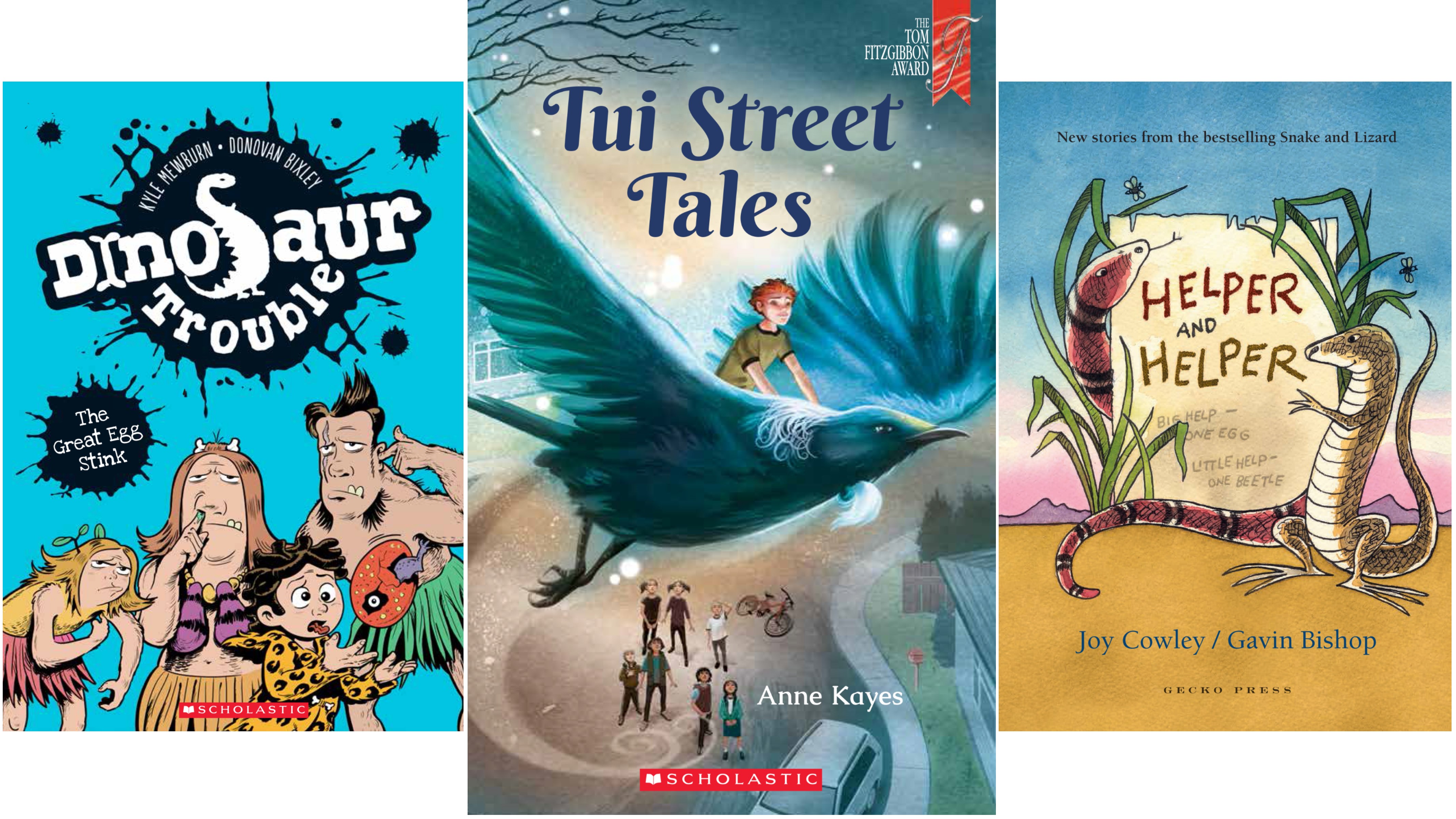
Ten-year-old Noah, from down the road, loves books, so I thought he’d make a perfect reading buddy. We decided I’d mostly read aloud to him.
Dinosaur Trouble #1: The Great Egg Stink, by Kyle Mewburn, illustrated by Donovan Bixley (Scholastic NZ)
You probably already know Kyle Mewburn and Donovan Bixley’s immensely successful Dinosaur Rescue series, which follows the adventures of brainy cave-boy Arg.
Dinosaur Trouble is a new prequel series, aimed at 5-7 year olds. ‘Younger siblings of Dinosaur Rescue fans will be thrilled to have their very own series,’ says the Scholastic website. Of course, there’s a good chance they’ll move on, as they become more competent readers, to Dinosaur Rescue. This is a nice idea, and a clever one …
Wait. Before we go any further, there’s one thing I need to get off my chest: Back in the ’70s, I was the annoying, pedantic kid who had to make sure everyone knew The Flintstones was all wrong because humans didn’t really exist at the same time as dinosaurs. My classmates, unsurprisingly, were like, and that matters why?
So before I started reading this book to Noah, it was an itch I had to scratch. I said, ‘You know humans didn’t really exist at the same time as dinosaurs, right?’ Responding to the annoying, pedantic kid in the manner passed down through generations, Noah looked at me like, and that matters why?
Right. We’ve established that doesn’t matter.
Mewburn and Bixley’s Dinosaur books – both series – have been unabashedly created for boys. It might sound strange to say, when there are farts and poos and vomit on every page, but the Dinosaur books really are beautifully written and illustrated.
Noah had enjoyed one of the Dinosaur Rescue books last year. And while he acknowledged that The Great Egg Stink was too young for him, he stayed pretty interested throughout, and even laughed out loud a couple of times.
At one point, Arg bounces on a dead mastodon’s bloated stomach until it pops, and maggots and rotting intestines gush out. I looked at Noah nervously, but he was unfazed. ‘It’s only a story,’ he said.
Helper and Helper, by Joy Cowley, illustrated by Gavin Bishop (Gecko Press)
This is the third book by Joy Cowley and Gavin Bishop about anthropomorphised BFFs Snake and Lizard.
I love it as much as I loved the first. The insightful characterisation and pitch-perfect dialogue make it fun to read aloud, and – adult or child – you’ll recognise these characters, their relationships, and their dilemmas from your own life. The fact that Cowley has said in interviews that she is Lizard, and her husband Terry Coles is Snake, adds a certain intrigue.
Sometimes the tension between the characters’ animal and human sides provides great discussion fodder. When one of Lizard’s demanding aunts vanishes, probably eaten by Snake, I commented to Noah, ‘Well, that character was pretty annoying anyway.’
Noah replied, ‘But that doesn’t mean she deserved to die.’
True, I thought. Cue discussion about animal values, human values, story values, and which of those, as readers, we’re subscribing to at any given time.
Noah was riveted all the way through the book, as I think a lot of kids with an abundance of emotional intelligence would be. I left it with him after we finished it, and several days later he was snapped re-reading it to the cat.
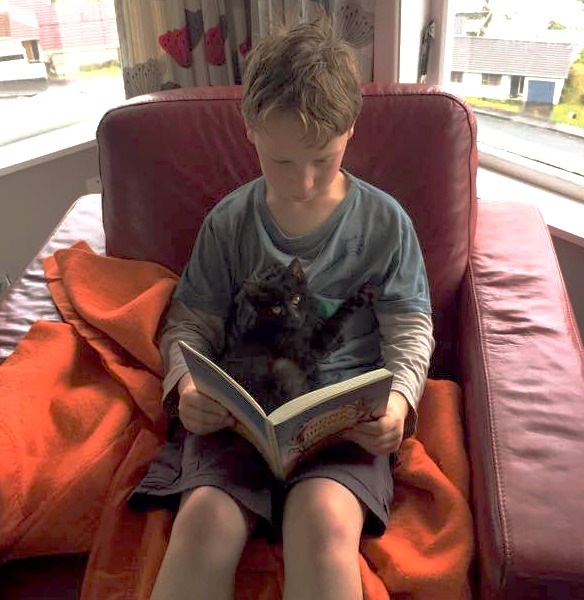
Tui Street Tales, by Anne Kayes (Scholastic NZ)
I’m going to use that hackneyed word-pairing ‘ambitious and flawed’, and add ‘also utterly engaging’.
Now, I love ambitious and flawed. I aspire to ambitious and flawed. Ambitious and flawed books are the ones that open conversations, whether those conversations play out in an individual reader’s mind, take place publicly between a writer and their readers, or take on lives of their own among groups of readers and commentators. (Imagine Harry Potter without its flaws – how much less we would all have had to chew on.)
Tui Street seems to be a typical cul-de-sac in a middle-class New Zealand neighbourhood, where the kids walk to school together in the mornings, and play on the street in the afternoons. But something strange is going on: the kids soon find they’re living out modern-day, local versions of traditional European fairytales.
Each chapter is a self-contained story, while also contributing to a loose overarching narrative, and one thing I love about these stories is that none are predictable. Kayes hasn’t shifted fairytales whole into their new setting, or even subverted just one or two aspects. She’s pulled them apart, and recombined their elements in entirely new ways. You never know where her imagination will take you.
Here and there, inconsistencies have crept in. For example, yes, Tim is the skeptical one of the group. But by the time he’s met a giant, watched little people magically clean up the recycling, and witnessed glowing patupaiarehe flying around a creek, I don’t reckon he’d be scoffing at his friends: ‘Surely they didn’t believe this? There was no such thing as fairies.’
Some chapters are more compelling than others. ‘Harry and Gemma’, which draws on ‘Hansel and Gretel’, is creepy, edge-of-the-seat stuff, and its ending is perfect.
‘Lucy, the Pea, and the Shaggy Dog Tree’, which references ‘The Princess and the Pea’ feels slighter. Mind you (SPOILER ALERT), when I discovered at the end that the Pasifika princess of the title, who is hounded by paparazzi, is named ‘Teuila’, I gasped. Sometimes it’s hard to know if you’re reading in too much – but is this an oblique, perhaps adults-only reference to the media storms around Teuila Blakely? If so, I couldn’t agree more: Blakely, transparent and firm in who she is, is a Real Princess.
Tui Street was published after winning the 2016 Tom Fitzgibbon Award, but it began life as Kayes’ Master’s thesis at the AUT Centre of Creative Writing. A lot of solid academic research into folklore has gone into this book, helping to make it a rich read. To my delight, I found that Kayes’ exegesis for the thesis is still online. Want to get geeky? I recommend it.
Reading the exegesis alongside the book opens up many possible discussions, but here are just a few points that struck me.
Kaye sets out to, and succeeds in introducing to her stories ‘socio-political and moral messages around gender, the environment and bi- and multi-culturalism’. I did wonder why, though, with these stated aims, there was no subversion of the European fairytale’s traditional heteronormativity.
I also found that the final tale, ‘The Seven at the Bottom of the Street’, referencing Snow White, unsettled me. Here, instead of seven dwarves, there are seven people who use wheelchairs. What made me uncomfortable was that in familiar versions of Snow White, the seven dwarves are somewhat sub-human characters. They either lack any individuation, like a chorus line, or are childlike and provide comic relief.
Kayes does subvert this to some extent. One of the Seven, Jason, is at least as three-dimensional as many of the other secondary characters in the book. Nonetheless it doesn’t feel, to me, like enough to wash away the taste of the analogy. The Seven feel othered.
In a few parts of the book, Kayes moves from the point of view of the central characters – the children in the street – into the minds of secondary characters. Perhaps doing this with Jason, for example, might have helped, at least somewhat, to remove the sense of othering? I’m not sure. There’s more to be said about this, and I’d be interested to be disagreed with.
Kayes also says in her exegesis that an important aim was to explore power relations between adults and children, subverting their oppressive depiction in fairytales to give children a sense of hope.I found the relationships between adults and children in these stories gripping in their emotional truth, and Kayes stays on the side of the children throughout. When they were suffering from an adult’s unreasonableness, I felt angry and frustrated for them. When they won a battle against an unreasonable adult, I cheered. And when they found safe haven with a kindly adult, I cheered some more.
Sadly, I ran out of time to read this book aloud to Noah, but last I heard he was reading it avidly to himself, as riveted as I was.
Maybe the cat will be in luck, too.
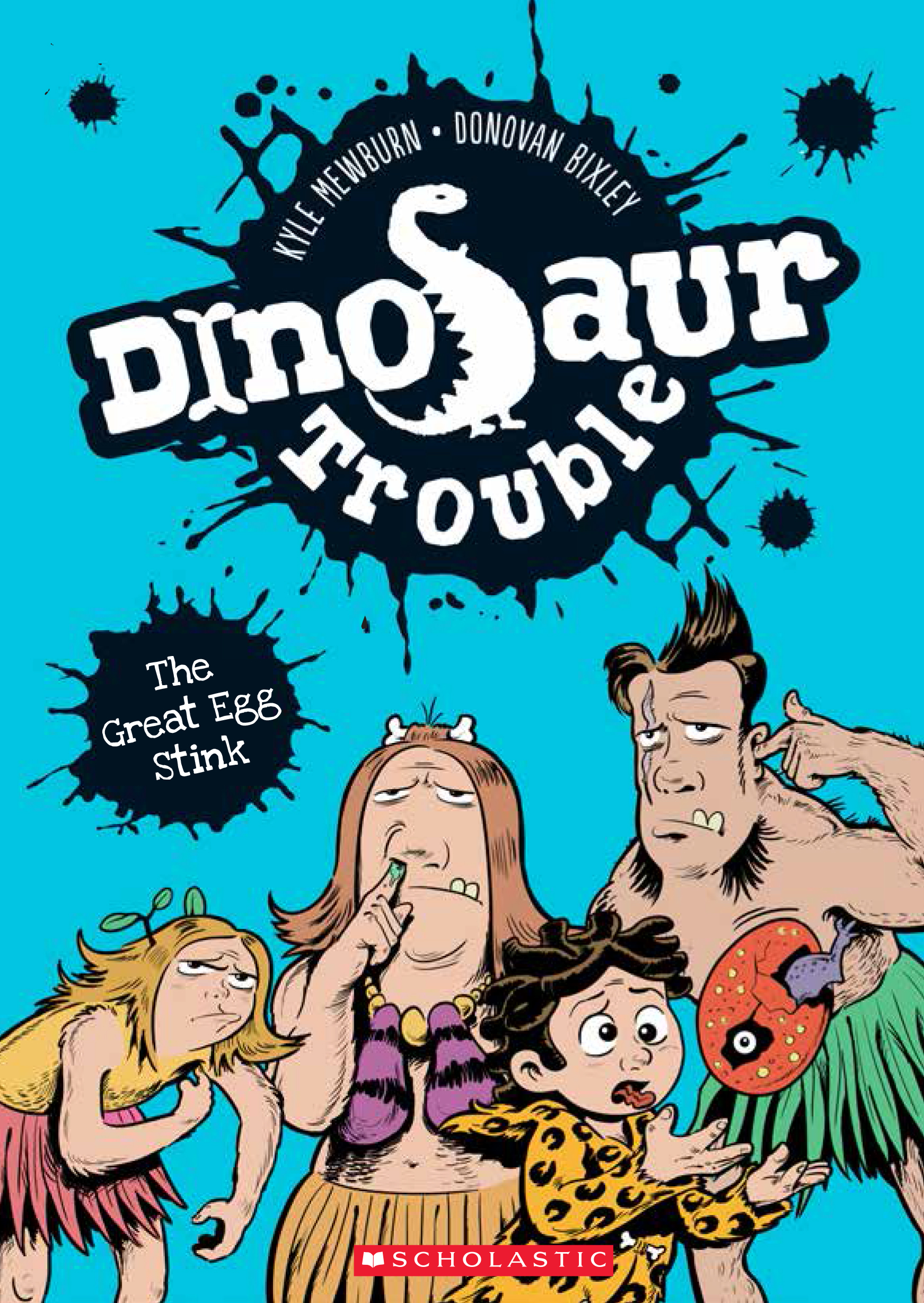
Dinosaur Trouble #1: The Great Egg Stink
By Kyle Mewburn
Illustrated by Donovan Bixley
Published by Scholastic New Zealand
RRP $5.99
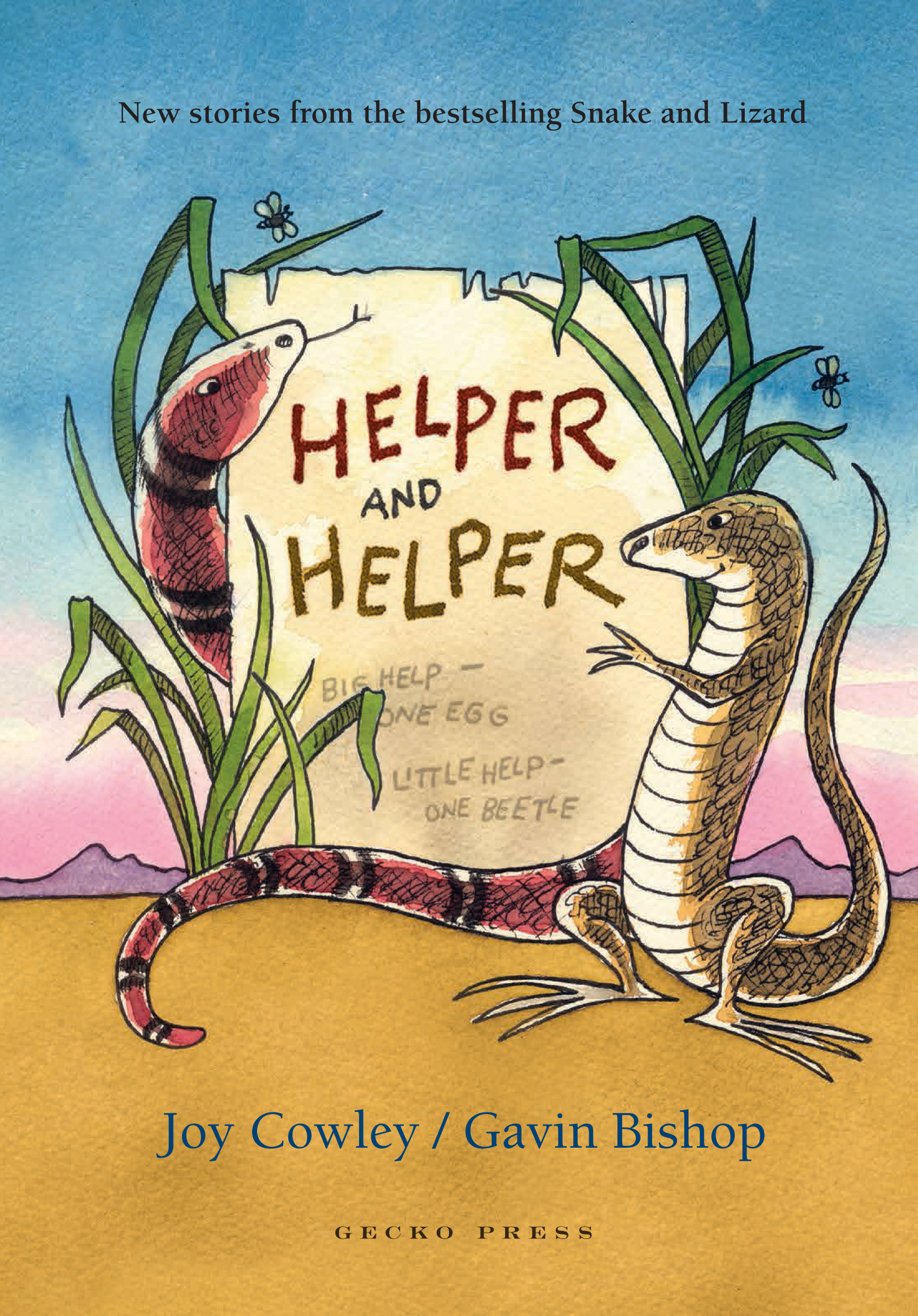
HELPER AND HELPER
By Joy Cowley
Illustrated by Gavin Bishop
Published by Gecko Press
RRP $22.99
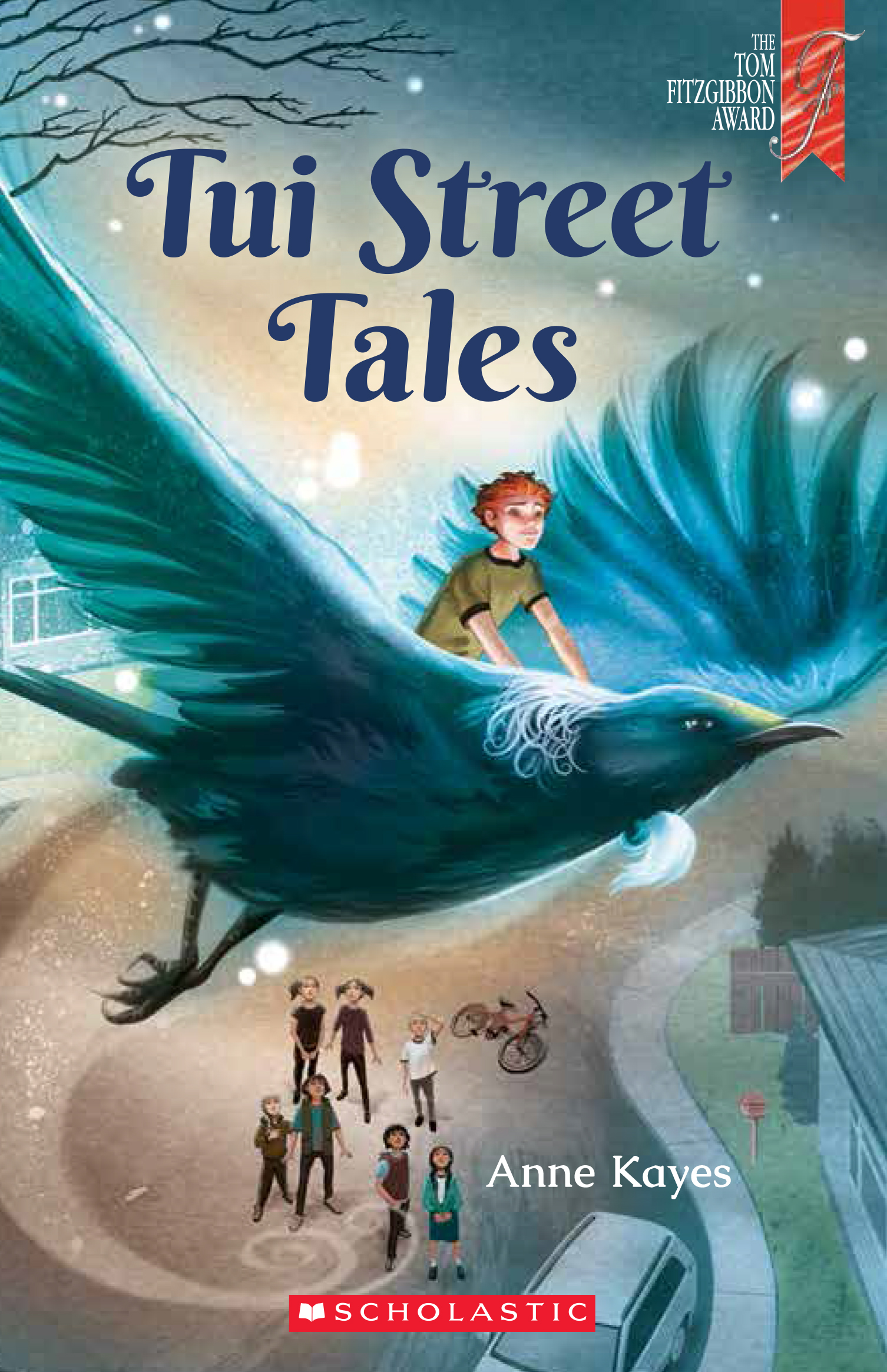

Johanna Knox
Johanna Knox is the author of The Fly Papers, A Forager's Treasury, and Guardians of Aotearoa, which was chosen by the NZ Heraldas their 2018 Book of the Year. She was the editor of Forest & Bird's magazine for children, Wild Things, from 2013 to 2016, and currently edits Diabetes Wellnessmagazine, as well as teaching Writing for Children online at Whitireia. She completed an MA in Creative Writing at the IIML last year, and is now studying for a diploma in rongoā Māori at Te Wānanga o Raukawa.



